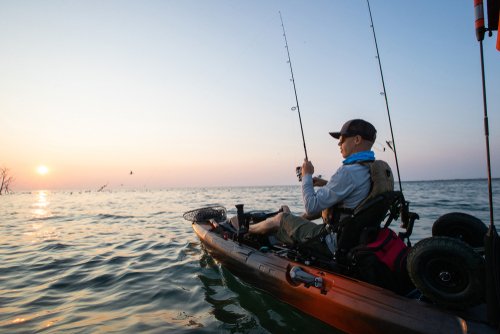A fishing rod is more than just an instrument used to cast baited hooks; it is an essential tool that influences every aspect of the angling experience—from casting accuracy to detecting subtle vibrations indicating potential bites. But how do we choose the best bass fishing rod? Let’s get to it!

In bass fishing, the right rod is as crucial as a conductor’s baton in an orchestra. It guides every movement and sensation from the water to the angler’s hands. A good bass fishing rod offers precise lure placement, accurate casting, control during fights, and sensitivity to detect subtle strikes. Choosing the perfect rod can make or break your fishing experience.
Understanding Bass Fishing Rods
Different rods suit different styles. Spinning rods, favored for their ease and precision with light lures, have a fixed reel seat on the underside. Casting rods, ideal for heavier lures, feature a trigger-like reel seat on top. Fly rods, less common but invaluable for specific techniques, are long and flexible for casting lightweight flies.
Choosing the Right Rod
The perfect rod balances length, action, power, and material. Length affects casting distance and leverage, while action – how the rod bends – influences hook setting and handling. From ultra-light to heavy, power ratings dictate the rod’s capability with various lure weights and line strengths. Material choice, like fiberglass for durability or graphite for sensitivity, impacts overall performance.
Spinning Rods: Versatile and User-Friendly
With their straightforward design, spinning rods are great for beginners and versatile enough for various techniques. However, they may offer less casting distance and power than casting rods.
For beginners, the Shimano Solora is an affordable, reliable choice. Intermediate anglers might prefer the St. Croix Mojo Bass for its enhanced sensitivity. Advanced fishermen should consider the G. Loomis E6X for top-tier performance.
Casting Rods: For Precision and Power
Casting rods offer more control and power, ideal for targeted casts and heavy cover fishing. They require more skill to avoid line tangles and are less forgiving than spinning rods.
Beginners could start with the durable Shakespeare Ugly Stik GX2, while experienced anglers might opt for the sensitive and powerful G. Loomis E6X.
Fly Rods: For a Unique Challenge
Fly rods, designed for delicate presentations, require skill for effective use. They excel in covering large areas but are less suited for tight spots or heavy cover.
Beginners might try the Orvis Clearwater, while experts could invest in the high-performance Scott Radian.
Customizing Your Rod
Customizing your rod – from the grip and blank to guides and reel seat – tailors it to your needs. Cork or EVA grips, graphite or fiberglass blanks, ceramic or stainless steel guides, and various reel seat designs can significantly impact your fishing experience.
In conclusion, selecting and customizing the right bass fishing rod enhances your experience and success on the water. Consider your style, the conditions, and how each component fits your needs to make the best choice.




